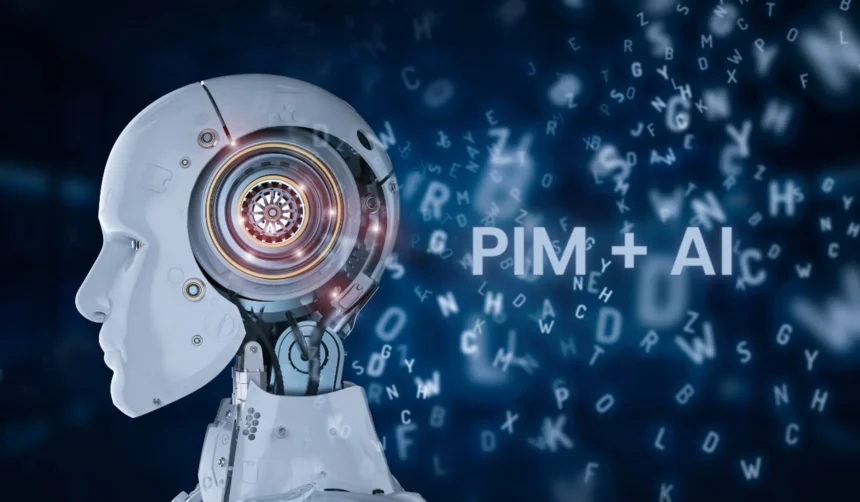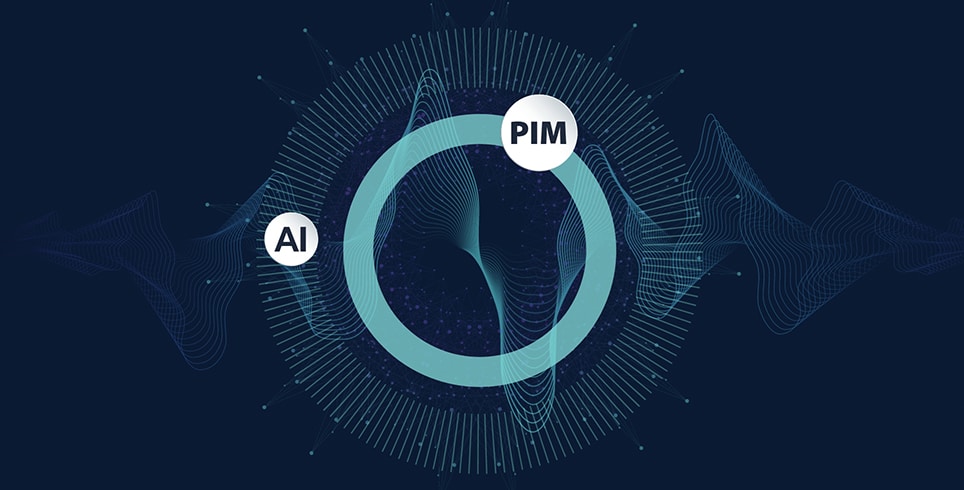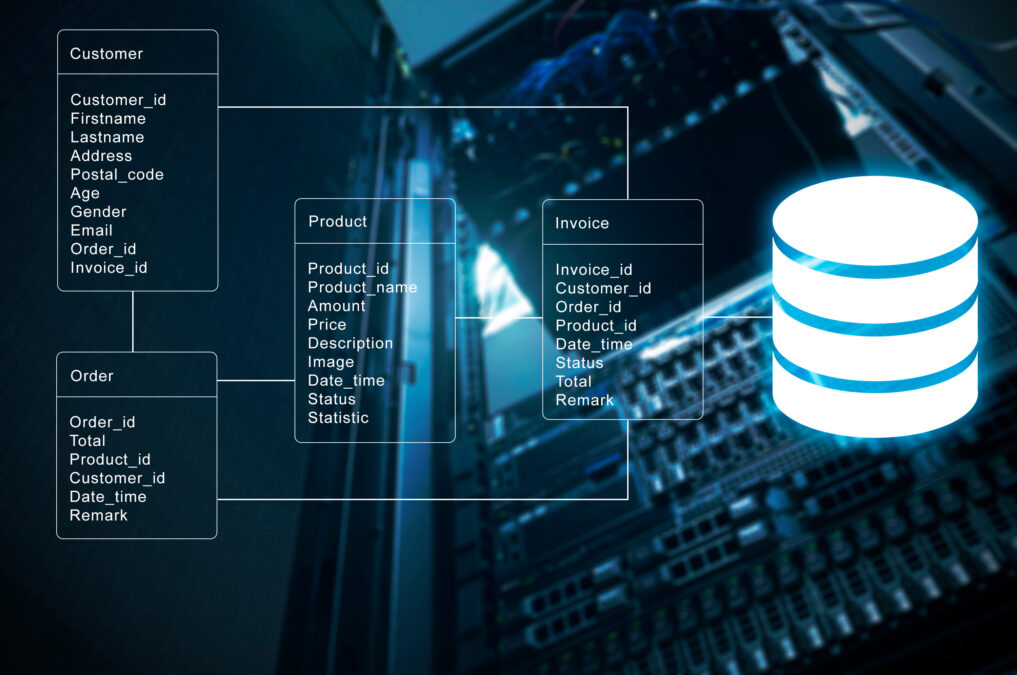Every business depends on accurate, up-to-date product data. Managing this information—things like names, descriptions, images and specs—is called product information management (PIM). PIM helps brands organize every detail about their products so teams can create seamless customer experiences. When data gets messy, mistakes happen: customers lose trust, and brands lose sales.
Artificial intelligence is now shaking up how companies handle product data. AI is helping businesses fix missing fields, flag errors faster, and even automate translations. The changes aren’t just about speed; they help teams focus on tasks that need a human touch. To understand how these new tools work, it’s helpful to start with the basics of PIM – Product Information Management.
AI is helping companies keep product details accurate and complete with far less manual effort. Brands adopting these advanced systems are seeing smoother workflows and fewer mistakes. This post will explore how AI is making product information management more efficient and reliable for today’s businesses.
Understanding AI’s Role in Product Information Management
Artificial intelligence has become the brain behind smarter product information management (PIM). With machine learning, automation, and natural language processing, AI is helping brands get the most out of their product data. Today, manual updates and sorting are giving way to faster and much smarter processes. This shift makes it easier for businesses to keep data accurate, content-rich, and ready for any channel, even as product lines expand or markets shift.
Evolution from Traditional to AI-Driven PIM Solutions
Before AI, PIM was mostly about manual work. Teams spent hours entering product details, tracking changes, and fixing mistakes across spreadsheets or old-school software. The process often left room for human error, outdated info, and endless double-checking. Copy-pasting from one system to another meant more mistakes would sneak in.
AI flips this story on its head. Automated validation looks for gaps and errors in real time, giving teams instant feedback. Intelligent systems scan thousands of SKUs and highlight what needs attention, flag inconsistencies, and suggest improvements. Instead of hunting for mistakes, staff can focus on work that adds real value—crafting compelling stories, customizing data for specific markets, or launching new products.
Manual PIM solutions made growth slow and data unreliable. AI-powered systems drive accuracy, speed, and smarter decision-making. For a deeper dive into how next-gen PIM uses AI to change the game, have a look at PIM 2.0 and AI Revolution.
Core AI Technologies Powering PIM Innovations
AI tools aren’t just automating old processes—they’re introducing powerful new abilities to PIM. Here are some of the most important:
- Data Enrichment: AI fills in missing details, updates old information, and checks for mistakes faster than any human team. This keeps product info relevant and consistent across every channel.
- Intelligent Categorization: Machine learning sorts products into the right categories, even as catalogues grow. It learns from your data and adapts, making sure items are always easy to find and organize.
- Automatic Content Creation: Natural language processing writes product descriptions, translates text, and suggests copy upgrades. Teams can launch in new markets with less manual effort and still keep messaging clear.
- Error Detection and Correction: AI continuously scans for typos, outdated data, or mismatches. It can auto-correct or highlight issues before publishing, cutting down on failed launches or customer complaints.
- Automation of Routine Tasks: By streamlining repetitive work, AI reduces manual load and supports faster scaling.
These advancements are turning PIM into a robust engine for growth. Companies adopting machine learning and smart automation are seeing fewer errors, sharper insights, and much faster time-to-market. For more on how AI enriches and automates product data, check out The Role of AI in Product Management, which highlights practical examples and benefits.
Want to know which trends and tech are shaping the future? The article on AI and PIM Trends explores where new AI-powered PIM tools are headed and what this means for businesses that rely on fast, reliable product data.
By tapping into these AI advances, modern PIM solutions leave manual methods in the dust—empowering teams to deliver top-quality product experiences, time after time.
Key Benefits of Integrating AI in PIM Systems
AI is raising the bar for product information management by making data cleaner, faster to update, and easier to scale. Businesses that bring AI into their PIM platforms unlock new levels of efficiency, keep customers happy, and stay ready for growth. Here’s how these breakthroughs are helping brands hit their goals every day.
Enhancing Data Quality and Operational Efficiency
Reliable product data is the backbone of successful sales, marketing, and customer satisfaction. With AI-driven PIM, product records are cleaner and more consistent. These systems cut down on manual entries, reduce human mistakes, and catch duplicate content before it hurts the brand.
Here’s how companies benefit when AI supports PIM:
- Automated error detection: AI spots typos, outdated info, and gaps in product specs faster than any manual check. These smart alerts mean teams spend less time searching for problems and more time improving results.
- Duplicate elimination: By scanning across vast product lists, AI can flag and remove repeated or conflicting details. This keeps catalogues tidy and avoids confusion for both teams and customers.
- Real-time updates: Instead of waiting for scheduled checks, AI tools can update data as soon as changes happen. This ensures pricing, inventory, and features are current everywhere.
- Reliability at scale: AI keeps data accurate whether a business is managing dozens or thousands of SKUs, which is especially important for global businesses.
Boosted accuracy pays off across every channel, driving stronger sales and smoother operations. For those who want to see practical PIM benefits, Top Benefits of a PIM System gives a closer look at real-world improvements, while Transform Product Data into Sales shows how better product information can turn browsers into buyers.
Personalization and Customer Experience
Product information is more than just specs and images—it’s the first impression customers have of what’s for sale. AI-powered PIM systems use customer insights and behaviour to adapt content in real time, creating shopping experiences that feel personal and engaging.
Here’s what’s changing for the better:
- Dynamic content recommendations: AI analyses buying patterns, search habits, and even local trends. The platform can then show the most relevant product details, images, and recommendations based on what each shopper cares about.
- Localized and targeted messaging: With smart automation, brands can update descriptions for different regions, age groups, or buyer personas fast, no manual edits across thousands of products.
- Improved customer confidence: Shoppers see up-to-date, accurate product information every time they browse. This means more trust in the brand and fewer abandoned carts due to unclear or confusing details.
- Personalization at scale: No matter how big the product range gets, AI-driven content can stay tailored to each audience segment.
This level of customization can turn casual shoppers into loyal fans. For a deeper understanding of how advanced PIM tools help brands adapt to global audiences, Global Scalability with PIM offers valuable insights.
AI in PIM doesn’t just upgrade operations; it pushes brands ahead by making every interaction smarter, faster, and more personalized.
Emerging Trends and Strategies in AI-Driven PIM
AI-driven PIM tools are changing how brands plan for growth and connect with customers. These new solutions help companies make smarter decisions, react faster to market shifts, and deliver the right product information wherever shoppers need it. This section breaks down the top trends in predictive analytics and how AI powers omnichannel and agile PIM strategies.
Leveraging Predictive Analytics for Strategic Growth
Predictive analytics has quickly become the gold standard for brands that want to stay ahead. With AI, businesses can study data from sales, customer behaviour, seasonality, and even external factors like supply chain risks. The result? More accurate forecasts and better planning.
Here’s how brands benefit from predictive analytics in PIM:
- Improved demand forecasting: AI models study historic and real-time sales data, helping teams stock what sells and skip what doesn’t. This reduces the risk of overstock and costly markdowns.
- Actionable insights on trends: Machine learning spots early signs of changing customer demand, so teams can update listings and push inventory where it’s needed most.
- Optimized pricing and promotions: By tracking shopper patterns, AI recommends prices and deals that get noticed and move inventory.
- Inventory management: Automated predictions cut down on waste and lost sales by making sure products are in the right place at the right time.
When AI does the heavy lifting, teams don’t have to guess what will sell next season. For more on how machine learning and predictive analytics are raising the bar for inventory and product management, read about how AI & ML are Changing the Game in Product Data Management. These tools give brands an inside track for faster, smarter growth.
The Road Ahead: Omnichannel and Agile PIM
Modern shoppers move between websites, marketplaces, and even social media before they hit “buy.” Businesses need PIM systems that help them meet customers everywhere, with data that’s always up to date. AI powers this by updating content across channels in real time.
Here’s what makes AI-driven, omnichannel PIM a smart choice:
- Consistent product experiences: AI pulls from a central hub to push the same product details to every sales channel, reducing errors and outdated information.
- Faster channel launches: With AI cleaning up and organizing product data, it’s easier to spin up new sales channels with the right content already in place.
- Agile, adaptive business models: As trends shift, AI helps brands pivot quickly—updating product info, running A/B tests, and analyzing results to guide next moves.
- Better data synchronization: AI keeps information in sync, so what customers see on one platform matches what’s elsewhere, building trust with every interaction.
Want a glimpse of what’s next? The top 5 PIM trends reshaping e-commerce in 2025 point to AI-driven automation, smarter synchronization, and a growing need for tight control over product information as key parts of future-ready PIM strategies.
For more actionable insights and a broader look at the evolution of PIM, visit the in-depth guide on AI and PIM Trends, Technologies & Future Strategies. Staying ahead with AI in PIM isn’t just about technology—it’s about giving customers the best experience, wherever they shop.
Conclusion
AI is now central to how businesses manage and improve product information. It takes the hassle out of updates, catches errors quickly, and frees up teams to focus on what customers actually care about. Tools powered by AI keep data sharp, speed up launches, and help brands show the right information everywhere shoppers look.
Companies using AI in their PIM have a real chance to stand out, adapt quickly, and build stronger customer loyalty. New features keep rolling out, so smart businesses should stay curious and up to date on what’s next.
For the latest shifts in the industry, explore the Product Information Management Trends 2025 to see where automation and AI are heading next. Those wanting a closer look at how leaders are raising the bar can check out Contentserv’s Strong performer in Forrester’s PIM wave.
Related News:
Artificial Intelligence (AI) Redefining Thailand’s Financial Landscape

















